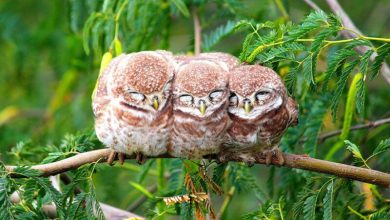Cute and rare pygmy hippos – they are the smallest in the world!
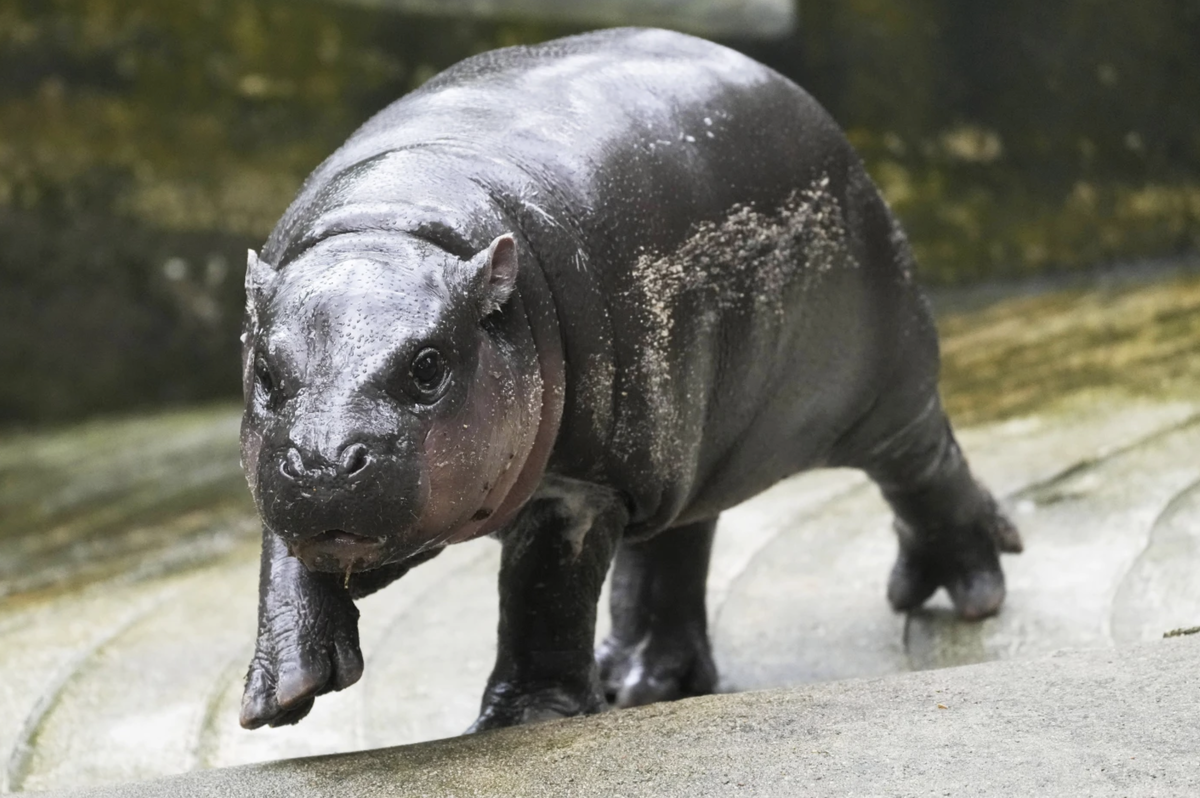
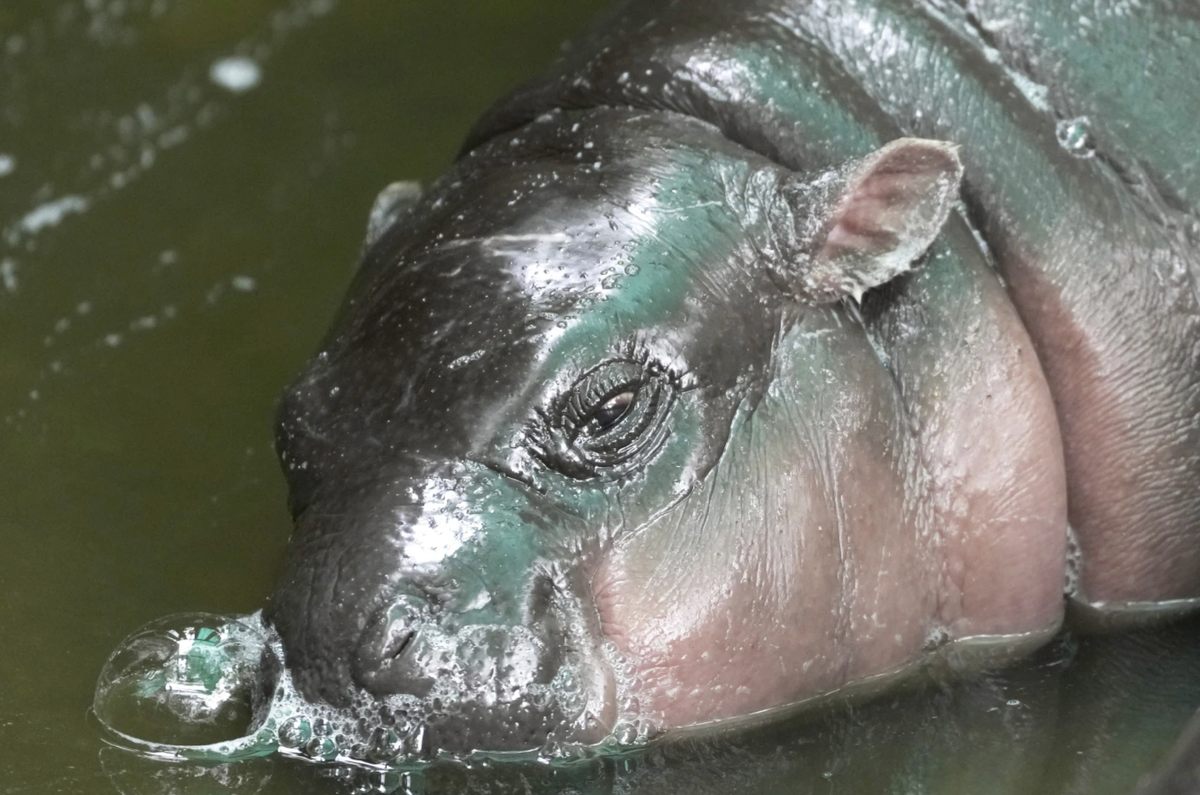
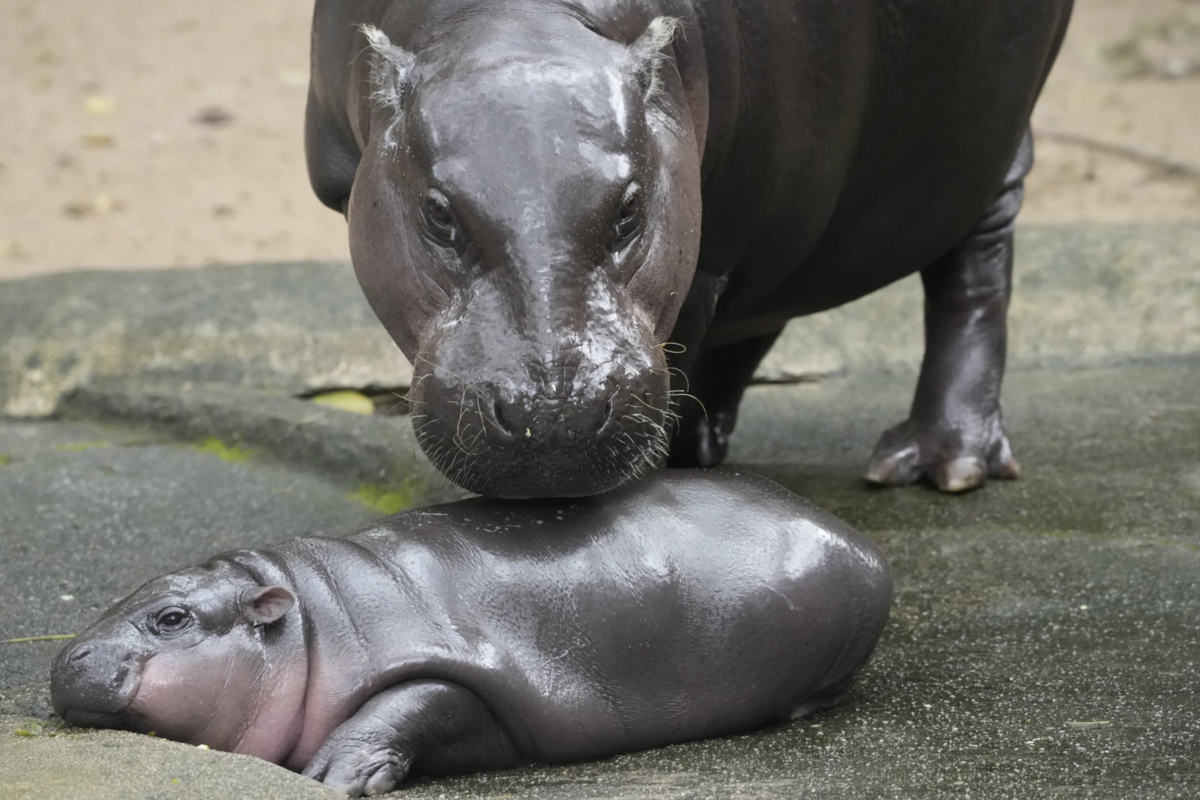
The editors of LIFE magazine shared this admiration from the very beginning. In the June 2, 1941 issue, the magazine published an article headlined ” World’s Smallest Hippopotamus Arrives in the U.S. from Liberia .” The pygmy hippopotamus in question had been abandoned by its mother, found by local Liberian residents, and given to a man named Silas E. Johnson, who worked in Liberia and was an amateur zoologist.
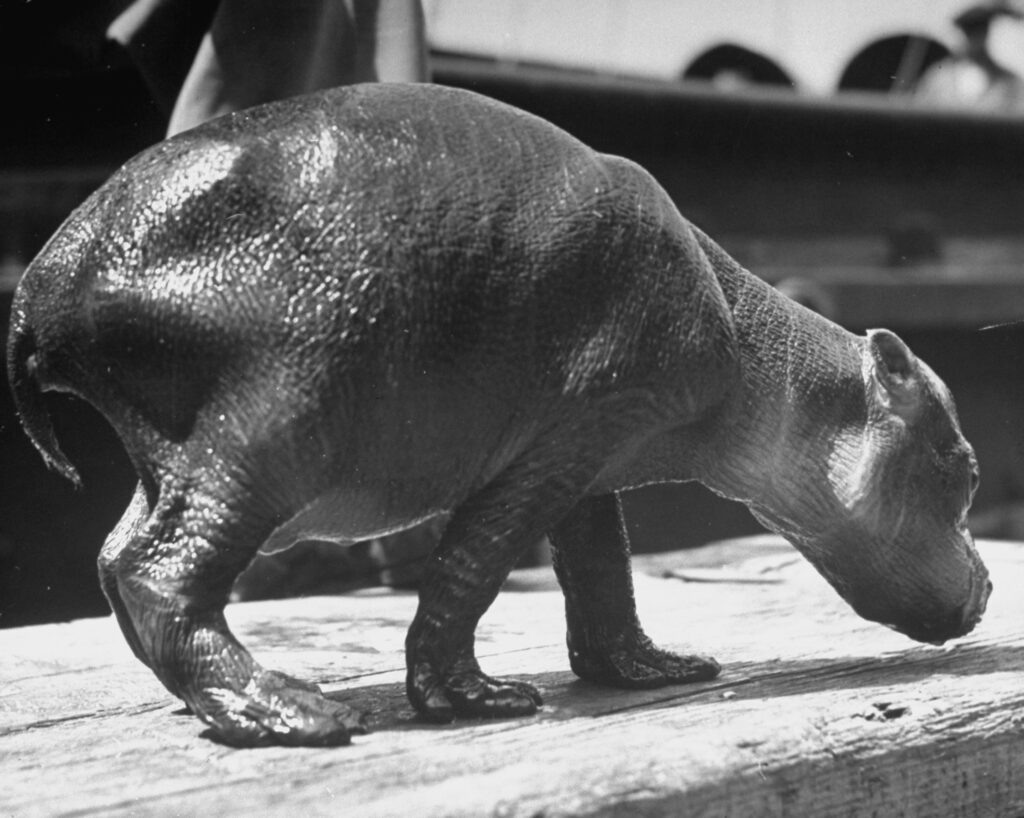 This rare baby hippopotamus named Skipper was abandoned by his mother in Liberia and brought to the United States by boat in 1941 in the company of an amateur zoologist.
This rare baby hippopotamus named Skipper was abandoned by his mother in Liberia and brought to the United States by boat in 1941 in the company of an amateur zoologist.
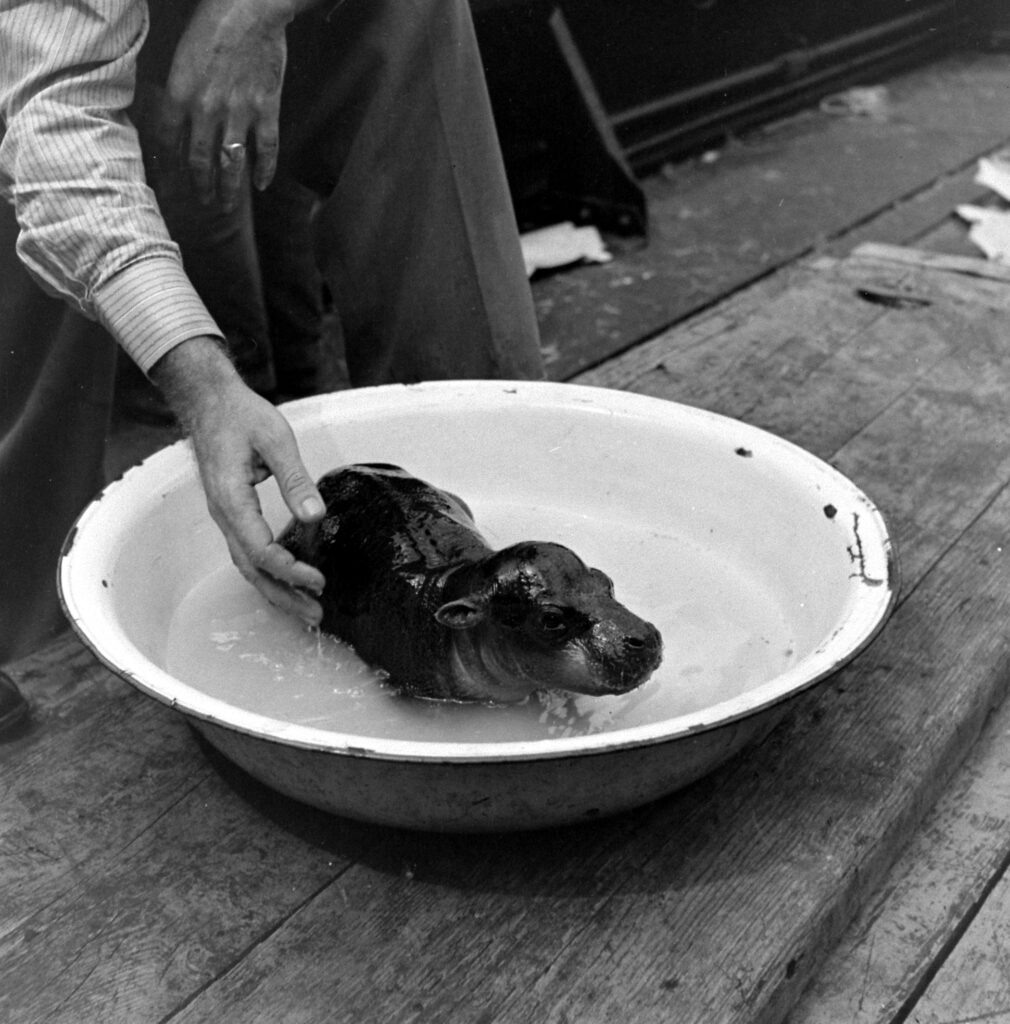 The skipper had to be kept moist to prevent his skin from peeling.
The skipper had to be kept moist to prevent his skin from peeling.
Johnson then headed to New York for his “twice-annual three-month vacation in the U.S.,” as LIFE reported, and took the baby hippopotamus with him. Upon arrival in America, the baby was two months old, weighed nine pounds (about 4 kg), measured 18 inches (about 46 cm) long, and earned the name Skipper during the sea voyage. Legendary LIFE photographer Alfred Eisenstaedt was there to capture the moment.
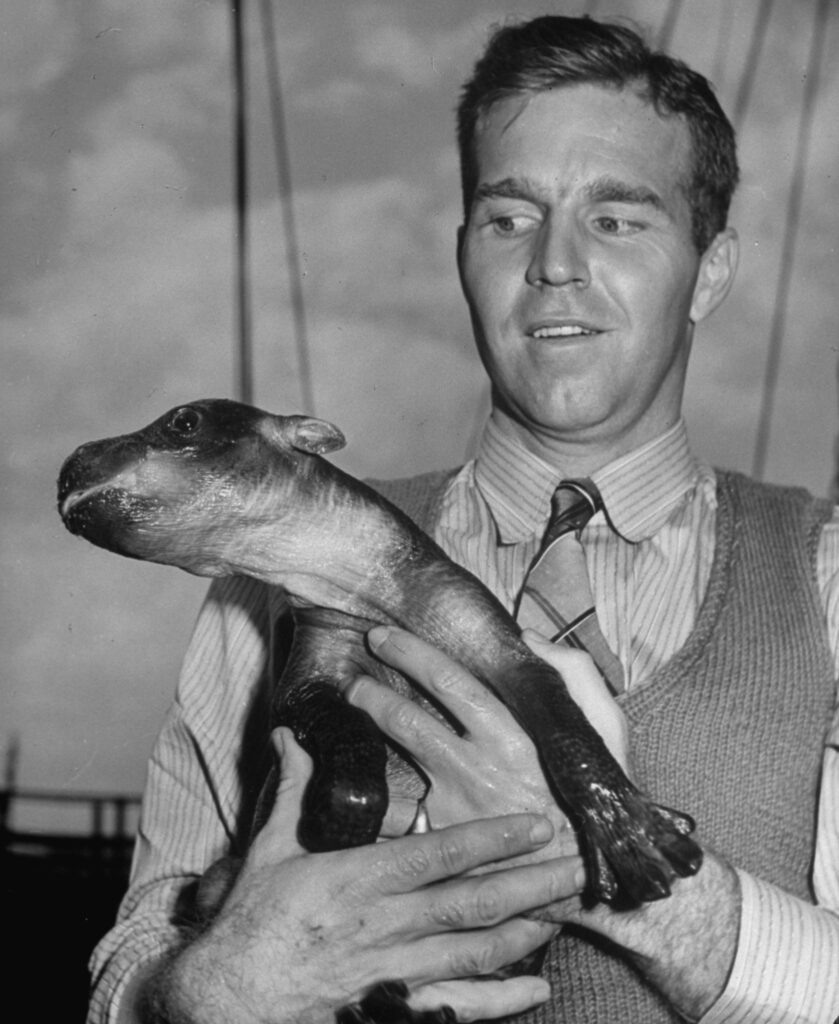 Amateur zoologist Silas E. Johnson brought this baby hippopotamus, abandoned by its mother, from Liberia to the United States; during a boat trip from Africa to New York, the hippopotamus earned the nickname Skipper. Alfred Eisenstaedt.
Amateur zoologist Silas E. Johnson brought this baby hippopotamus, abandoned by its mother, from Liberia to the United States; during a boat trip from Africa to New York, the hippopotamus earned the nickname Skipper. Alfred Eisenstaedt.
 Taking Baths. Alfred Eisenstaedt.
Taking Baths. Alfred Eisenstaedt.
LIFE explained in detail what made Skipper so valuable:
“What makes Mr. Johnson’s pet rare is that pygmy hippos, found only in Liberia, are tenacious fighters who are fiercely protective of their young… When he grows up, Skipper will weigh about 400 pounds (about 180 kilograms). Normal hippos weigh 30 pounds (about 14 kilograms) at birth and three tons at maturity.”
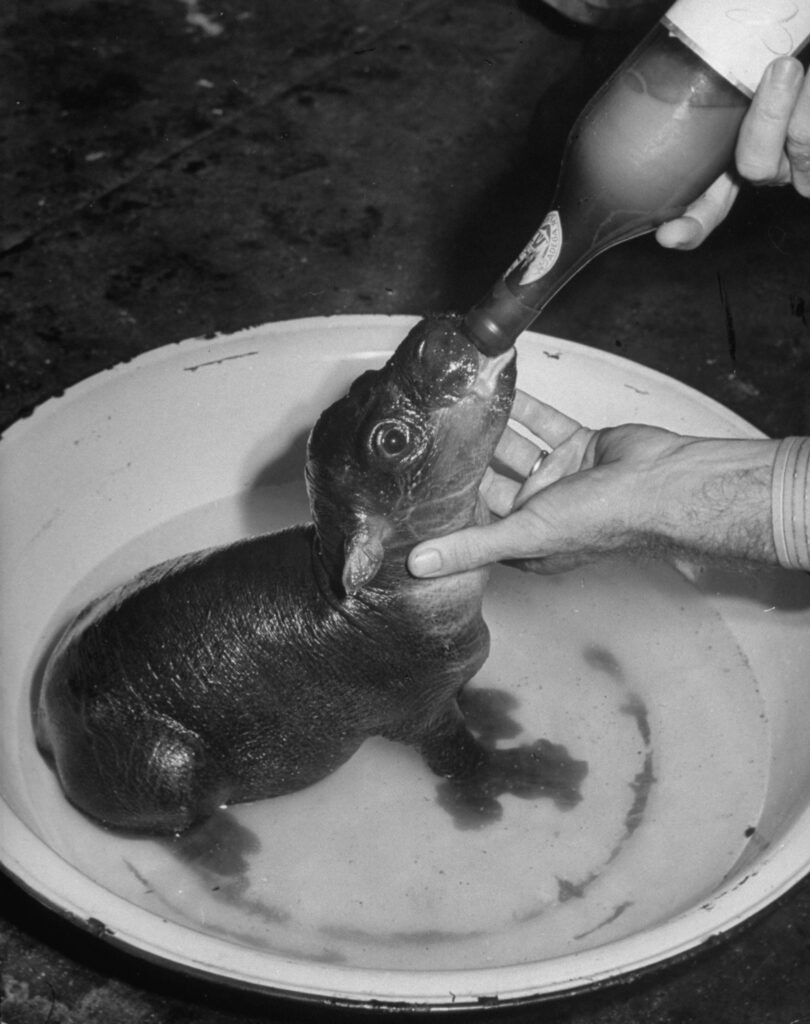 This pygmy hippopotamus, abandoned by its mother in Liberia and brought to the United States by an amateur zoologist, ate half a pint of milk and pablum (processed baby cereal) from a bottle four times a day, 1941. Alfred Eisenstaedt.
This pygmy hippopotamus, abandoned by its mother in Liberia and brought to the United States by an amateur zoologist, ate half a pint of milk and pablum (processed baby cereal) from a bottle four times a day, 1941. Alfred Eisenstaedt.
Although Skipper was rare, he wasn’t the only one. In 1952, LIFE featured another pygmy hippopotamus arriving in the United States. This baby, named Gumdrop, was photographed for the magazine by George Scadding along with his keeper. Unlike Skipper, Gumdrop arrived in America accompanied by his mother.
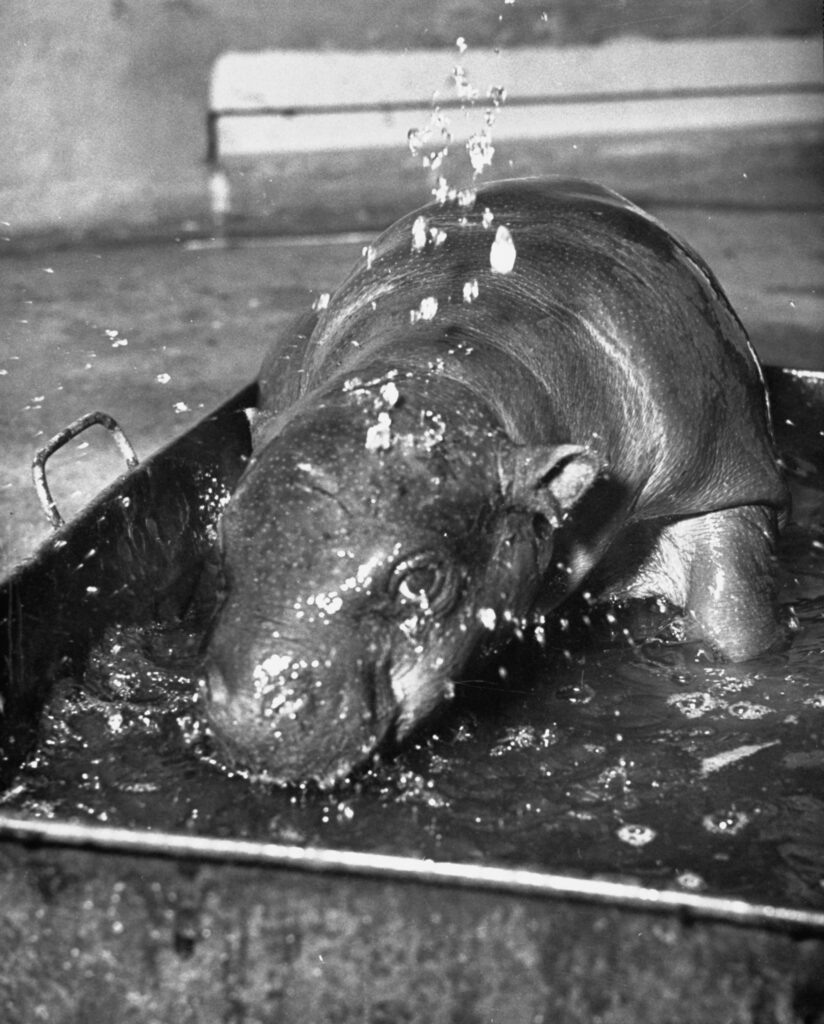 A baby hippo named Gumdrop takes a bath in 1952. George Scadding.
A baby hippo named Gumdrop takes a bath in 1952. George Scadding.
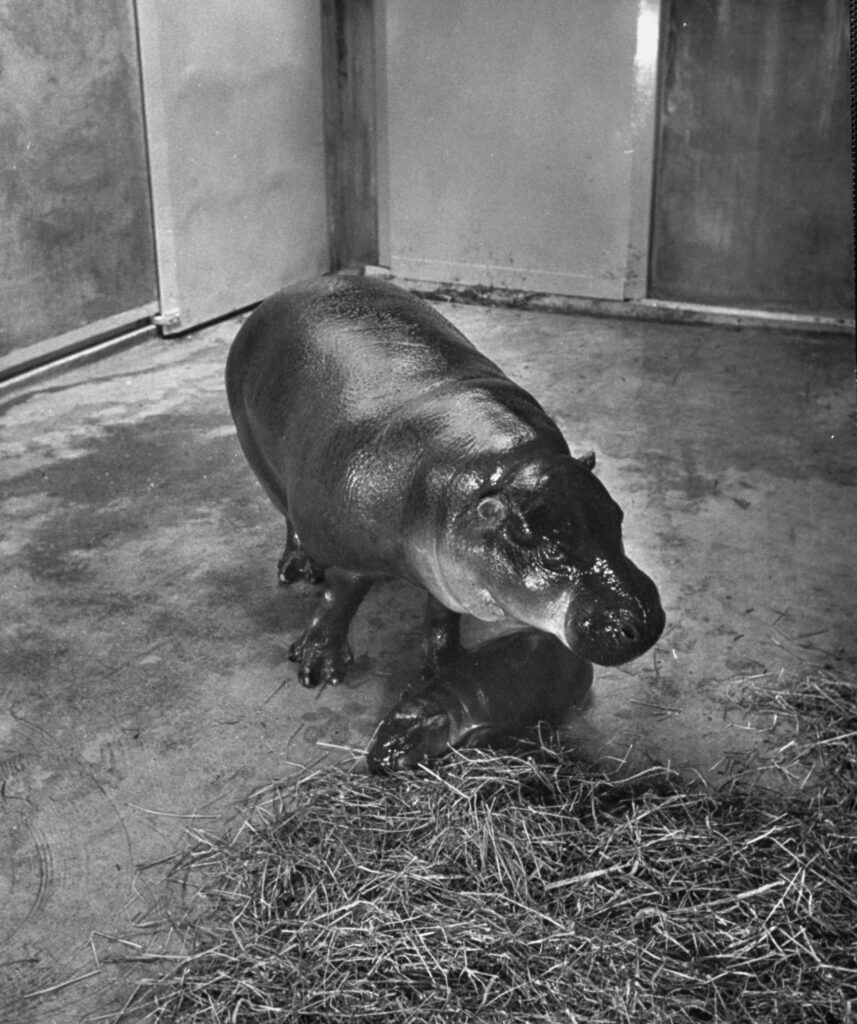 A baby hippo named Gumdrop and his mother, 1952. George Scadding.
A baby hippo named Gumdrop and his mother, 1952. George Scadding.
 A zookeeper gives Gumdrop, a baby hippopotamus, a bath in 1952.
A zookeeper gives Gumdrop, a baby hippopotamus, a bath in 1952.
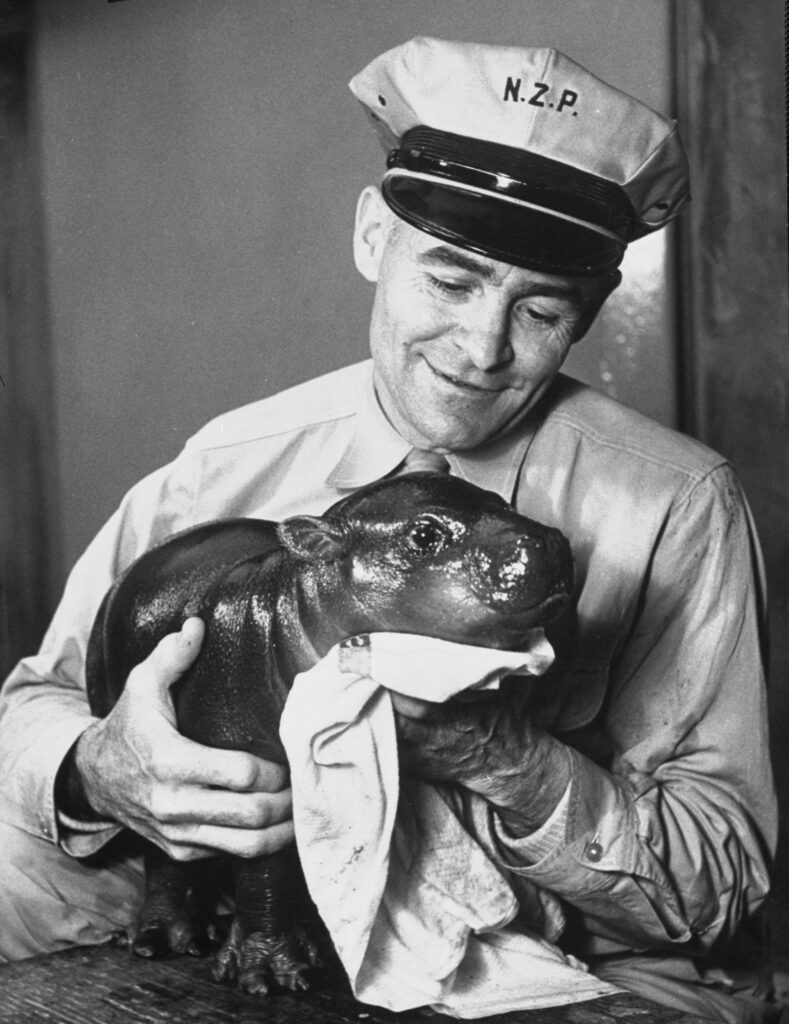 Gumdrop, a small hippopotamus, was released by a zookeeper after a bath in 1952.
Gumdrop, a small hippopotamus, was released by a zookeeper after a bath in 1952.
Just how rare is the pygmy hippopotamus? Outside of zoos, its primary habitat remains Liberia and other neighboring West African countries. It’s estimated that by 2025, only 2,500-3,000 pygmy hippos will remain in the wild.
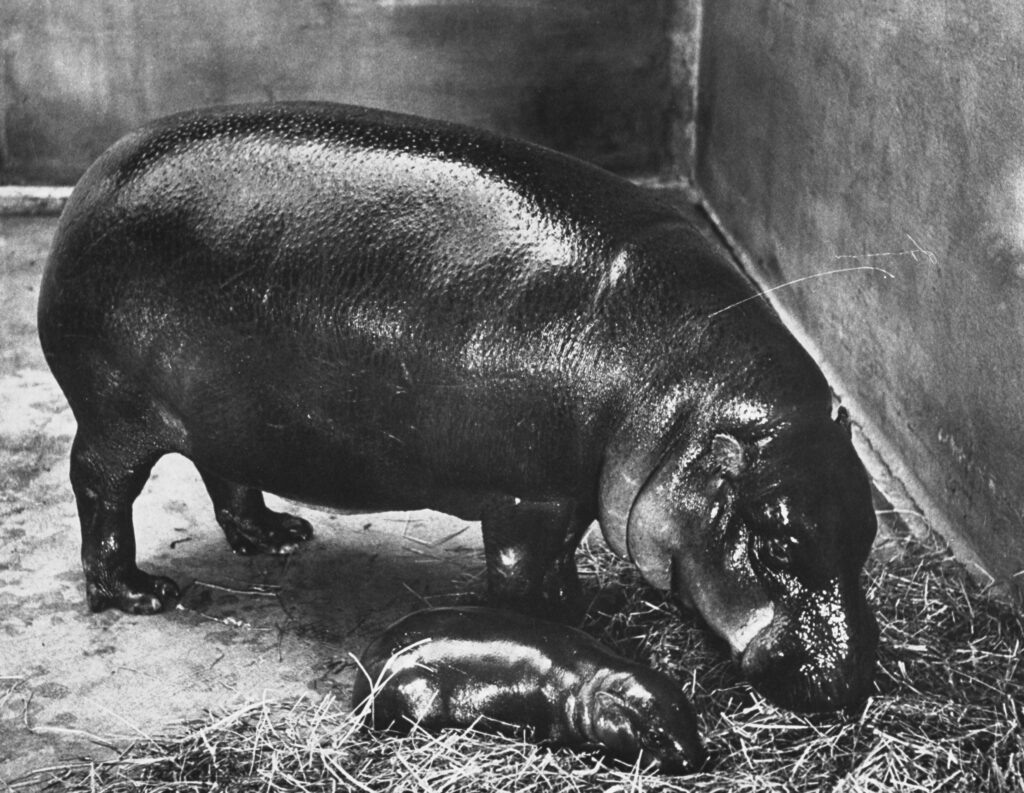 Little Gumdrop being fed by his mother, 1952.
Little Gumdrop being fed by his mother, 1952.


